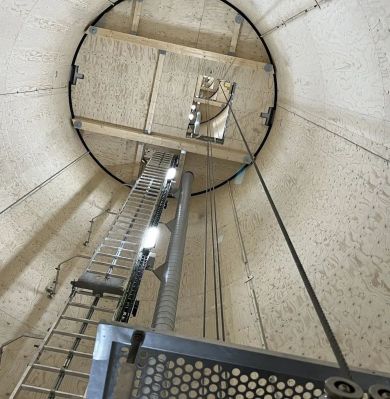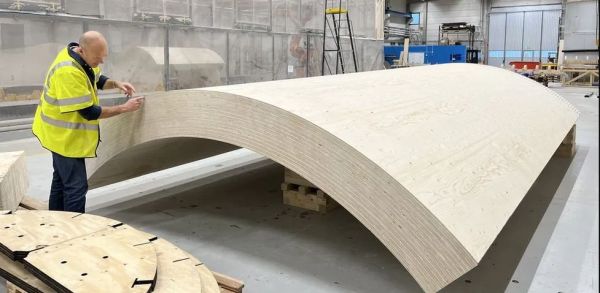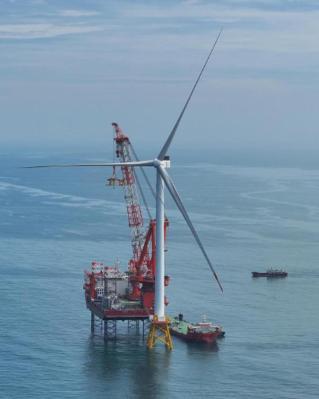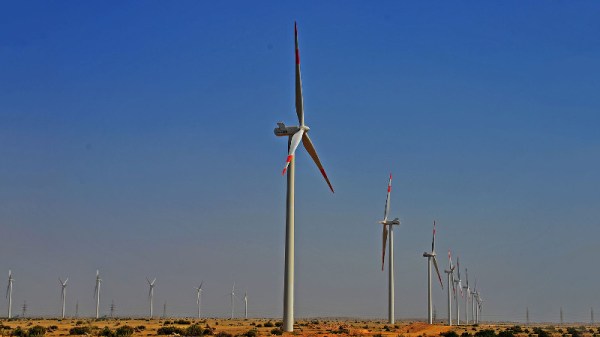
Modern-day wind turbines are constructed using mostly concrete and steel, topped by the fiberglass composite blades mounted to the nacelle that houses the gearbox and generator, along with much of the control systems. With the ever increasing sizes of these turbines transporting the components to the installation location is a harrowing task, something which Swedish company Modvion claims to improve upon with its wooden tower elements that come mostly packaged flat, for on-site assembly. The BBC recently took a look at the first of these partially wooden wind turbine towers. At 105 meters tall, it features a standard V90-2.0MW turbine and blades.
Rather than using concrete slabs at the base with steel tower segments on top, or a fully steel tower like with most wind turbines, Modvion uses segments of layered wood which it calls ‘the module‘. These are assembled out of 144 layers of 3 mm thick spruce, with ring segments assembled on-site. This means that multiple of these modules can be stacked onto a standard truck with no concerns that come with oversized transports. According to Modvion these wooden towers should last about the same number of years as their steel counterparts. Continue reading “Making The Case For Wooden Wind Turbines With Swedish Modvion”















